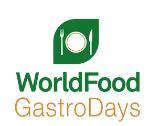The Nordic diet, rooted in the traditional cuisines of Denmark, Finland, Norway, Iceland, Sweden, and Greenland, is experiencing a resurgence in global interest. Characterized by an emphasis on locally sourced ingredients such as seafood, root vegetables, berries, and whole grains, the diet aligns with contemporary health and environmental concerns. Its rise in popularity is attributed to publications like “The Nordic Cookbook” and “The Nordic Way,” which highlight the diet’s potential to reduce chronic illnesses and improve heart health. Additionally, the diet’s focus on sustainability resonates with consumers seeking environmentally friendly eating habits.
Despite its growing appeal, experts suggest that the Nordic diet may not achieve the widespread adoption seen by other regional diets, such as the Mediterranean diet. Factors contributing to this include a perceived lack of a cohesive lifestyle image and the diet’s similarities to existing dietary patterns. Nonetheless, the Nordic diet’s emphasis on nutrient-dense, locally sourced foods positions it as a viable option for health-conscious individuals. As consumers increasingly prioritize wellness and sustainability, the Nordic diet offers a model that integrates traditional eating practices with modern health and environmental considerations.
 UzFood 2025
UzFood 2025 WorldFood Ukraine
WorldFood Ukraine  WorldFood Kazakhstan
WorldFood Kazakhstan  WorldFood Ukraine
WorldFood Ukraine  Seafood Expo Global
Seafood Expo Global FOOD & DRINKS Moldova
FOOD & DRINKS Moldova